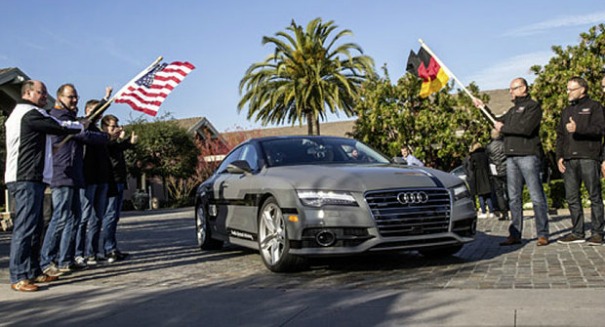
The A7 uses radars and GPS to help an onboard computer determine when to accelerate, steer, and brake, which could assist drivers on long trips in the near future.
In what is sure to be a showstopper, Audi is sending its driverless car on a 550-mile road trip from San Francisco to Las Vegas for the 2015 Consumer Electronics Show.
Things didn’t go so well at last year’s CES for Audi’s A7 driverless car, as it suffered glitches and the car’s human driver had to take control. A year later, Audi believes it has a handle on things as it sends the car on a two-day road trip to the event, which serves as a showcase for the latest and greatest in technology, according to a CNET report.
The company says the sensors in the car, nicknamed Jack, is “production ready,” according to the report.
The A7 comes with its own long-range forward radar this it uses for cruise control, as well as two rear-facing and two side-facing radar sensors. A laser scanner that is situated behind the grille acts as a redundant sensor to assist with sold-object detection.
The car also sports a foward-looking 3D camera along with four smaller cameras that are capable of monitoring the front and rear views of the car’s corners.
All this information, along with GPS on board, is processed by a computer in the car that controls the steering, acceleration, and braking.
The car operates at speeds of up to 70 miles per hour. It will alert the driver to take control when it approaches and urban area, and if the driver doesn’t take control soon enough, its flashers will come on and pull over to the shoulder.
The car is capable of changing lanes and passing vehicles while on the highway.
Still, there are challenges for the technology. Not all roads are in pristine condition, and faded lane lines or lines that have been removed due to construction will require the car to rely on GPS.
The limitations show that the technology has a ways to go. However, Audi is hoping to prove that the technology has come far enough that it could be installed on production cars within a few years, assisting drivers in long trips on the highway.
Leave a Reply